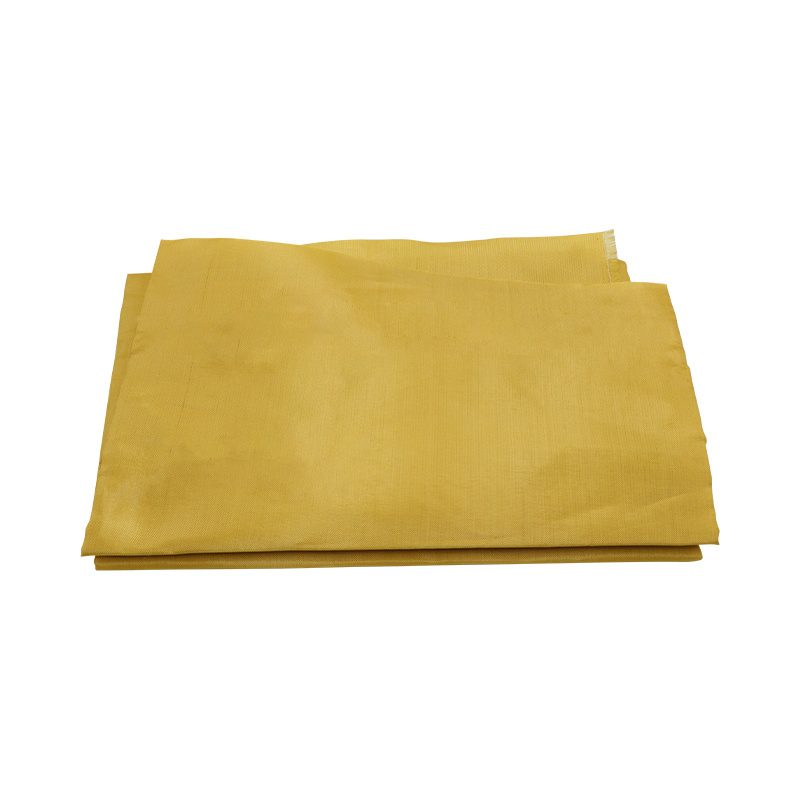Polyimide woven fabric is used for aircraft interior materials such as seat covers.
Oct 10,2025

Polyimide woven fabric is a structure formed by the vertical interlacing of polyimide fibers as warp and weft yarns, offering greater stability, higher strength, and resistance to deformation.
Properties of polyimide woven fabric:
High-temperature resistant : Long-term use can withstand temperatures up to 250°C or higher, while short-term exposure can endure extremely high temperatures exceeding 500°C without melting.
Low-temperature resistance : It maintains excellent flexibility and remains non-brittle even at a liquid helium temperature of -269°C.
The limiting oxygen index is high. : Typically above 38%, it is an inherently flame-retardant material that self-extinguishes immediately when removed from an open flame, without burning or dripping.
Excellent thermal stability : Under high temperatures, it not only maintains its shape but also exhibits minimal degradation in physical and mechanical properties, with outstanding dimensional stability.
Outstanding chemical stability It exhibits excellent resistance to most organic solvents, acids, bases, and more, as well as being resistant to hydrolysis and radiation.
Excellent mechanical properties : High strength, high modulus, excellent wear resistance—making the resulting fabric robust and long-lasting.
Superior electrical insulation : It maintains stable insulation performance under both high and low-temperature conditions, ensuring high reliability.
Safety and Environmental Protection : It does not generate harmful substances during the production and processing stages, emits low smoke when burned, and releases minimal toxic gases.
Applications of polyimide woven fabric:
1. High-Temperature Industry
High-temperature flue gas dust removal: Baghouse filtration (filter bags), used for treating tail gases from boilers in industries such as power generation, steel, and cement, is one of its largest application areas. It effectively handles high-temperature, highly corrosive flue gases.
Thermal insulation materials: Used as thermal jackets, insulation blankets, expansion joints, and more for high-temperature pipelines and equipment.
Welding Protection: Welder's protective blankets and fire-resistant barriers to prevent sparks from igniting flammable materials.
2. Aerospace
Spacecraft Thermal Protection: Insulation and flame-retardant layers used in rockets and spacecraft to withstand the extreme temperatures during atmospheric re-entry.
Aircraft interior materials: seat covers, cabin wall panels, and more—enhancing aviation safety standards.
Flexible thermal insulation felt: Used for insulation around aerospace engines.
3. Specialized Protection
Firefighting gear: Provides firefighters with efficient thermal protection and flame-retardant safety.
Military uniforms: Flame-retardant combat suits worn by special forces units such as tank soldiers, pilots, and naval personnel.
Industrial protective clothing: High-temperature workwear used by workers in industries such as metallurgy, petrochemicals, and power grids.
4. High-tech
Composite material reinforcements: Used as reinforcing agents for high-performance resins such as PI and epoxy resin, these materials are engineered to produce high-temperature and high-strength composites (e.g., PI/PI composites), which find applications in aircraft components, missile casings, and more.
Electrical insulation materials: Used in Class H and Class C motors, transformer insulation kits, slot insulation, and more.
Honeycomb Core Material: A replacement or upgraded material for Nomex honeycomb used in aerospace applications.
PREVIOUS:
Related Posts
Contact Us
E-mail:
gdkaidun@163.com
Phone/WeChat:
86-131-3828-6677
Address:
Room 401, Building 21, No. 1, Keqing Road, Yundonghai Street, Sanshui District, Foshan City, Guangdong Province





